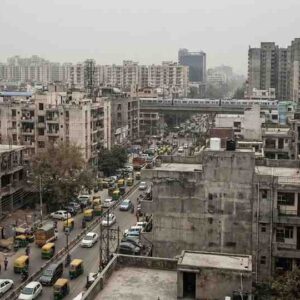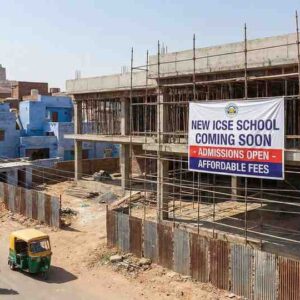India’s higher education system, one of the largest in the world, has grown significantly in recent decades. With over 1,000 universities and 40,000 colleges, it caters to millions of students across diverse disciplines. However, despite its scale, the system faces several challenges that hinder its ability to deliver quality education and meet global standards.
This article explores the key challenges in the Indian higher education system, their impact, and potential solutions to create a more robust and inclusive framework.
1. Lack of Quality Institutions
India has a few globally recognized institutions like the IITs and IIMs, but the quality of most higher education institutions is subpar.
- Challenges:
- Outdated curriculum and teaching methods that fail to align with industry needs.
- Limited focus on research and innovation.
- Low representation in global university rankings.
- Impact: Graduates often lack the skills needed for employment or advanced research.
2. Insufficient Funding
Higher education in India is underfunded, particularly in public institutions that cater to a majority of students.
- Challenges:
- Limited budgets for infrastructure, faculty development, and research.
- Heavy reliance on student fees in private institutions, making education expensive for many.
- Impact: Students in underfunded institutions face inadequate facilities and limited exposure to modern learning tools.
3. Unequal Access to Education
Access to quality education varies significantly across regions, socioeconomic backgrounds, and genders.
- Challenges:
- Rural and semi-urban areas often lack higher education institutions.
- High costs in private institutions make education unaffordable for many.
- Socio-cultural barriers restrict women and marginalized communities from pursuing higher education.
- Impact: A significant portion of the population remains underserved, exacerbating inequalities.
4. Poor Faculty Quality
A shortage of qualified faculty is one of the major issues plaguing Indian higher education.
- Challenges:
- Inadequate training and professional development programs for teachers.
- Low salaries and lack of incentives to attract talent into academia.
- High student-to-teacher ratios in many institutions.
- Impact: The lack of skilled educators hampers the quality of teaching and learning.
5. Limited Focus on Research and Innovation
India lags behind countries like the US and China in terms of research output and innovation.
- Challenges:
- Minimal investment in research infrastructure and funding.
- Bureaucratic hurdles in accessing grants and publishing research.
- Limited collaboration between academia and industry.
- Impact: India struggles to produce cutting-edge research and innovations that could boost its global standing.
6. Outdated Curriculum and Rigid Structures
Many universities continue to follow curricula that fail to reflect the needs of a rapidly changing world.
- Challenges:
- Courses often lack interdisciplinary approaches and focus on rote learning.
- Slow adoption of modern technologies and methodologies like online learning and AI tools.
- Impact: Graduates are ill-prepared for dynamic job markets, leading to high unemployment rates.
7. Overemphasis on Theoretical Learning
Indian higher education often prioritizes theoretical knowledge over practical applications.
- Challenges:
- Limited internships, industry exposure, and experiential learning opportunities.
- Focus on exams and grades rather than skills development.
- Impact: Students struggle to adapt to real-world challenges in professional settings.
8. Regulatory Challenges
The higher education system in India is heavily regulated by bodies like the UGC, AICTE, and others, which often create roadblocks instead of enabling progress.
- Challenges:
- Overlapping jurisdictions and inconsistent policies.
- Delays in granting approvals for new courses and institutions.
- Impact: Innovation and flexibility are stifled, hindering the system’s growth and modernization.
9. Brain Drain
A significant number of talented students and faculty members migrate to other countries for better opportunities.
- Challenges:
- Limited availability of cutting-edge programs and research facilities in India.
- Higher salaries and better infrastructure abroad.
- Impact: India loses some of its brightest minds, weakening its intellectual capital.
10. Lack of Industry-Academia Collaboration
The disconnect between academic institutions and industries results in a mismatch between graduates’ skills and market demands.
- Challenges:
- Limited internship programs and on-campus training for students.
- Minimal participation of industry professionals in curriculum design and guest lectures.
- Impact: Employers often find graduates underprepared for modern workplace requirements.
11. Overcrowding in Institutions
High enrollment numbers in popular universities and colleges lead to overcrowded classrooms and stretched resources.
- Challenges:
- High student-to-teacher ratios and limited infrastructure.
- Difficulty in maintaining quality education for large groups.
- Impact: Students struggle to receive individualized attention and quality resources.
Steps to Address These Challenges
- Increase Funding for Education
- The government must allocate a higher percentage of GDP to education, focusing on infrastructure, research, and faculty development.
- Promote Research and Innovation
- Encourage collaborations between academia, industry, and international institutions.
- Simplify grant processes and incentivize research through rewards and recognition.
- Ensure Equitable Access
- Establish more higher education institutions in rural and underserved areas.
- Introduce scholarships and financial aid programs to make education more affordable.
- Enhance Faculty Quality
- Offer competitive salaries and professional development opportunities.
- Use AI and digital tools to support teaching and reduce administrative burdens.
- Curriculum Reform
- Update courses regularly to include interdisciplinary approaches and skill-based learning.
- Embrace technology, including online platforms and virtual labs, to enhance learning.
- Foster Industry-Academia Collaboration
- Integrate internships, apprenticeships, and guest lectures into the curriculum.
- Form advisory boards with industry leaders to align programs with market needs.
- Encourage Autonomy
- Simplify regulations and allow institutions more freedom to innovate and design programs tailored to modern challenges.
Final Thoughts
The Indian higher education system has immense potential, with a growing population of young learners eager to shape the future. However, realizing this potential requires addressing systemic issues like outdated curricula, inadequate funding, and inequitable access. With the right reforms and investments, India can build a higher education system that is inclusive, innovative, and globally competitive.













